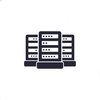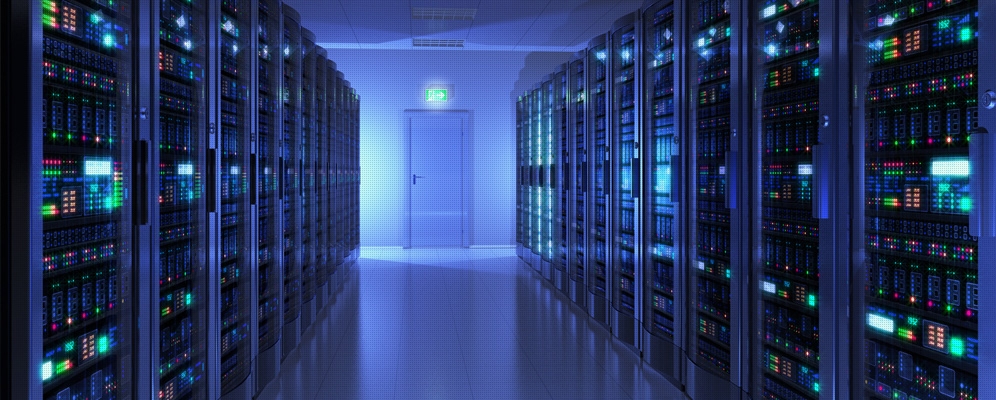Solutions
Data Center Infrastructure Services

1-Physical Field
The area that will serve as data center needs a place which are web servers, data center equipment can be located comfortably and technical staff can work comfortably enough to design large corridors. Considering the high cost of air conditioning, which is one of the two elements that consume energy in a datacenter, heat insulation should be given importance on floors, ceilings and walls. There should be no plumbing close to the Datacenter area and it should not be located on low floors in areas that are under flood risk. For easy wiring and air conditioning, the ceiling height should be designed as at least 3m compared to the production of raised floor. Selecting the raised floor at least 40cm is a factor that increases the efficiency so that cooling can reach every corner of the datacenter efficiently.
Most airborne dust is electrically conductive. Due to their design in many computer systems, the dust is drawn into the system through cooling fans and it is seen that the dust covers the system boards in a long time. These dust particles, which accumulate on the cards, also contribute to short circuits and increase the internal temperatures of the systems. In order to prevent the entrance of smoke and dust and to ensure security, the datacenter should only have windows that can be used in case of emergency.
2-Air conditioning
Air conditioning can be summarized as the conditioning of air in an indoor environment in order to keep the temperature, humidity, cleanliness and air movement at optimum levels for human health and comfort or industrial processing. Servers and network equipment generate heat at the power rate they use as a natural consequence of challenging operations. Since the systems within the data center will be in continuous operation, it is necessary to air-condition the environment in order to prevent loss of performance due to heat (Min 10C- Max 30C) / humidity (Min 20% - Max 50%), and even worse, to prevent interruption of our service due to heat-induced failures.
In addition to cooling, electronic circuit boards should be kept at an ideal rate in ambient humidity as it will be necessary to prevent oxidation due to excessive humidity or static electricity formation in the air due to low humidity.
3-Energy and Energy Infrastructure
It is not sufficient to plug the server into the wall socket to provide the energy required for the webservers where web pages and web applications are run, due to the possibility of a power failure. In this case, uninterruptible power supplies (UPS), which charge the batteries in case of energy, can use the energy in the batteries when the power is cut off, must be used in order to prevent power outages. In the event of long-term interruptions, the energy stored in the batteries in the power supply is insufficient to generate electrical energy, that is to say, the use of a generator. Tens of electronic devices in the environment due to electrical noise, especially network devices and network performance should not be affected by the appropriate characteristics of the network cable should be selected.
Faraday's cage should be applied in the building for the transmission of the shock wave to the ground due to lightning, and lightning rods should be placed in every corner of the building depending on the building grounding structure.
The part of the energy coming from the network until the final delivery to the web server is as important as generating the energy. A good UPS should be installed with an electrical infrastructure suitable for the great power to be drawn even if the generator is used, and will not cause any interruption in subsequent expansion situations. It should be noted that the power to be drawn from the transformers installed by the energy company for common use is limited. Since it is not possible to obtain energy in the form of LV (220V) after certain powers in the system to be installed, separate transformer areas should be reserved for MV 34500 Volt energy.
4-Network and Network Devices
The network equipment used should be well selected and the network plan should be well designed so that the data can reach the servers quickly and return to the user at the same speed. Subsequent correction of an incorrect planning will result in a waste of money and time. The most direct access to the access provider, which provides access to the main backbone, will give the best quality result.
5-Network Operation Center (NOC)
Although most of the systems are electronic and automatic, people still play an important role in the management of the datacenter. In this respect, the system should be monitored on a 24/7 basis by the monitoring unit established. At Noc, the more simple but important information is presented to staff, the faster the solution of problems will be. If possible, Noc should be located in a dominant area that sees the entire datacenter.
Necessary security measures must be taken at the entrance gates to prevent unauthorized access.
6-Security
In addition to the fire alarm and extinguishing system installed against possible fire situations, monitoring and recording of all datacenter areas and outdoor areas with IP camera is of great importance. To ensure data security, the datacenter should be located at the most difficult point of the building and access security must be taken.
7-Redundancy
All of the above systems always have the potential to fail. In this respect, one more backup of the reserve, which is referred to as N + 1, should be in the system. Particularly systems such as generators that will take time to repair should have a backup and periodic maintenance and tests should be done regularly. Batteries in battery-containing systems such as UPS should be tested regularly and replaced even if not in use.
The systems that must have a backup are as follows:
One to one backup generator systems that can carry the whole system in case of failure.
N + 1 designed UPS system.
At least two uplink and alternative operators using different physical routes towards the Internet service provider.
Emergency plans of devices that cause network interruption in case of failure HA (Hectare unit) and redundant routes.

